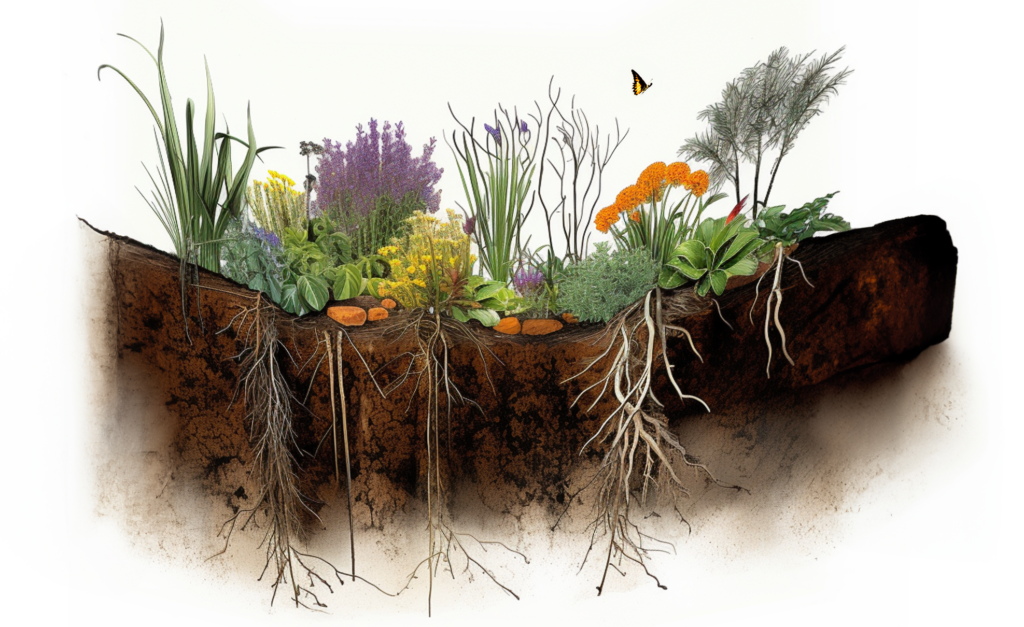Expanding or updating your landscaping this summer? Consider the benefits of a Rain Garden.
Rain Gardens are a landscaping feature designed to address water runoff concerns, while adding visual appeal to your yard.
Rain gardens are a practical solution for homeowners seeking to prevent erosion and manage excessive rainfall.
Let’s explore how rain gardens can transform your outdoor space into an environmentally friendly oasis!
Understanding Rain Gardens
Rain gardens are specially designed to collect rainwater from hard surfaces such as roofs, patios, driveways, and compacted soil, channeling it into a shallow garden bed.
The garden bed allows the captured rainwater to slowly seep into the ground instead of rapidly flowing off, carrying away topsoil and debris, into storm drains, waterways, or your swimming pool.

Environmental Benefits
Capturing water in a rain garden provides significant environmental benefits.
- You’ll help reduce flood risks and drainage issues by limiting water flow into storm sewers.
- The gardens act as natural filters, removing pollutants from runoff and improving water quality.
- By replenishing groundwater resources and promoting sustainable water management, rain gardens play a vital role in maintaining a balanced water table.
- Planting contribution to biodiversity and habitat creation further enhances the ecological health of urban areas.
Capturing water in a rain garden contributes to the restoration and preservation of native plant species. The selection of hardy and water-tolerant plants in these gardens promotes biodiversity by attracting birds, butterflies, and beneficial insects. This influx of wildlife enhances the ecological balance in urban environments and fosters a thriving habitat for these organisms.
Creating Your Rain Garden
A rain garden only requires four elements:
- A source of stormwater runoff, such as a downspout or sump pump discharge.
- An absorbent soil mix with lots of compost.
- Full or partial sun.
- Native plants that are both water-tolerant and drought-tolerant. Properly constructed rain gardens are designed to allow overflow in a large rain event and hold standing water for no more than 48 hours.
Resources
Stormwater / Rain Gardens
Source: The City of London
Rain Gardens
Source: London Middlesex Master Gardeners
How to Build a Rain Garden in Your Yard
Source: Family Handyman


 Meet Yoh!
Meet Yoh!


